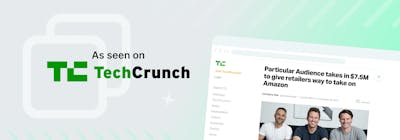As inflation continues to rise, more DTC companies are betting on bundles to drive sales.
Bundling - a marketing strategy that combines two or more complementary products as a package - is the ultimate win-win for retailers and customers.
If you haven’t considered it already, product bundling is a great way to boost sales and average order value (AOV) while improving customer experience (CX).
Bundling saves shoppers time and money and makes their purchase journey simple. Why go off site when they can find everything they need in one place (a.k.a., your website)?
In fact, according to Shopify, around 80% of online shoppers said they would prefer to buy multiple products at once, rather than separately.
In this article, we break down the reasons why bundling is so effective, and share some tips to help ensure your Bundles strategy pays off.
So, how do Product Bundles benefit retailers?
1. Increased basket size and AOV
According to research, “Companies using Bundles can increase revenue by 20% or more compared with those that don’t use them."
Bundles keep customers on site by helping them to find more of the products they want, faster. They offer better value for shoppers than buying products individually and they also boost revenue per customer by encouraging shoppers to buy more items.
This is really helpful when customers are already looking for multiple products. For example, if a shopper needs back-to-school supplies, a ‘Back to School Bundle’ of pens, erasers and paper offered at a discount price in the form of an easy one click checkout smooths the path to conversion.
2. Inventory clearance
Bundles help retailers reduce inventory risk by moving products faster, therefore:
- Reducing inventory waste.
- Cutting the cost of storing products.
- Clearing surplus and slow-moving stock.
Combining products that aren’t selling as quickly with popular products in a Bundle is one of the key strategies retailers use to shift inventory, and has the extra benefit of improving product discovery.
Shorter decision-making processes also lead to faster sales cycles, which means retailers can move more products and grow their margins.
3. Customer satisfaction
Bundles offer customers more value than they would get by purchasing items separately, while also driving higher sales.
Retailers can provide even more value with Bundles by offering free shipping on combined orders or discounts on multiple items in a single cart, as well as free shipping above a certain order value.
These strategies are highly effective ways to generate customer satisfaction and loyalty.
What are the key Bundling strategies that convert?
1. Finding the right price for Bundles
You could be missing out on a lot of sales by offering your product at a price that’s too high or too low.
When deciding on how much to charge for your Bundle, consider the following factors:
- What are your competitors charging for similar Bundles?
- How much would customers pay for each individual item?
- What’s the average amount shoppers are willing to spend on the Bundle as a whole?
- What value does the Bundle offer customers?
By figuring out what people are willing to pay for each individual item that makes up your proposed Bundle, you can find your pricing sweet spot for maximum conversions.
2. Harness the power of automated AI Bundles
With the power of AI, manual bundling is a thing of the past.
Automated Bundles not only save retailers time, but can supercharge conversions by taking into account a shopper's context when recommending Product Bundles.
This is a powerful strategy, as offering irrelevant products (or even too many) can hurt your conversion rate and reduce sales.
Using ‘wisdom of the crowd’ tech, AI dynamically groups complementary products together for each customer based on their shopping context, creating a smooth and intuitive experiences for customers.
AI predictions have such high confidence levels that, for example, retailers using Particular Audience's AI Powered 1-Click Bundles see a 30% to 60% increase in units per transaction.
By providing Bundles that are personalized to a shopper’s context, you can offer a more intuitive shopping experience.
3. Offer Bundles at Checkout
Identifying the right moment to offer a Bundle is crucial to the success of your strategy.
Although you could offer Bundles on product pages, these pages can be busy and distracting. Placing Bundles at checkout is an effective way to boost sales, as customers are more likely to complete their purchase if they see value in it.
In short
Bundling creates enormous value not only for retailers but also customers. As inflation continues to climb and customers seek greater value for their money, retailers will use Bundles to grow basket sizes while also reducing supply chain related costs like shipping and packaging.
By harnessing the power of automated AI Bundles, retailers can also offer more intuitive shopping experiences that generate customer loyalty and help consumers find what they want faster.



